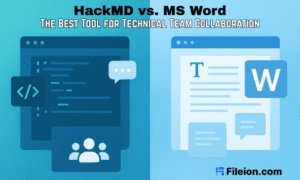SaaS adoption is accelerating in modern enterprises, offering teams access to essential tools without significant overhead. However, this rapid adoption often leads to SaaS sprawl, a scenario where multiple software subscriptions are scattered across departments, leading to increasing costs, security risks, and inefficiencies.
Teams independently subscribing to SaaS solutions results in reduced visibility, lack of governance, and integration challenges. However, by recognizing these hidden costs and adopting strategic management practices, organizations can gain better control over SaaS sprawl, optimize spending, and enhance efficiency.
Uncontrolled SaaS Costs
When different teams independently subscribe to SaaS tools, costs can increase quickly. Duplicate subscriptions, unused licenses, and premium features that go unnoticed can lead to wasted spending. Without visibility, organizations may end up paying for redundant services.
Common Cost Pitfalls
- Duplicate Subscriptions – It’s possible that the tool you have chosen for your solution, the same one, is already being used by a different team in the same organization. This increases costs unnecessarily.
- Unused Licenses – Your organization is probably still paying the license cost of a tool that is not in use anymore.
- Premium Features – Teams may opt for higher-tier plans without fully utilizing them.
To control costs, organizations should maintain an inventory of all SaaS subscriptions, regularly audit usage, and consolidate tools where possible. Implementing a centralized SaaS management approach helps reduce unnecessary spending. Organizations can also negotiate enterprise licenses to get volume discounts and avoid individual subscriptions that inflate costs.
Security and Compliance Risks
Every SaaS tool presents certain security risks. If not managed properly, sensitive information could be shared across multiple platforms, which raises the attack surface. Compliance requirements like GDPR, HIPAA, or SOC 2 add to the complexity when different tools are used to store and process regulated data.
Key Security Risks
- Unauthorized Access – Lack of proper access control can lead to data leaks.
- Shadow IT – Employees using unapproved tools can create security gaps.
- Weak Authentication – Tools without MFA increase the risk of account breaches.
Organizations must establish security policies, restrict who may access the systems, and incorporate any unique suites of SaaS into identity management solutions. Regular audits can help guarantee compliance and reveal risks well in advance of becoming a significant issue. Team leaders from IT units must monitor third-party vendors on compliance certifications and strictly enforce data encryption policies.
Integration Challenges and Data Silos
SaaS tools often operate in isolation, making data integration difficult. Different departments may use tools that do not communicate with each other, leading to fragmented data and inefficient workflows.
Consequences of Data Silos
- Inconsistent Reporting – Business intelligence tools may generate inaccurate insights due to disconnected data sources.
- Redundant Data Entry – Teams may manually transfer data between systems, increasing errors and inefficiencies.
- Delayed Decision-Making – Lack of integration slows down access to real-time data.
Using integration platforms like iPaaS (Integration Platform as a Service) can help connect SaaS applications. Standardizing APIs and using automation tools can further improve data consistency across systems. Organizations should also evaluate whether a new SaaS tool integrates with their existing tech stack before adoption.
Shadow IT and Lack of Governance
Sometimes, employees use the SaaS tools without proper approval from their IT team. This introduces spending that is not tracked. Security and compliance-related risks also increase. If there is no governance, IT teams can face the problem of inefficiencies and risks that they are unaware of.
Steps to Reduce Shadow IT
- Implement Approval Workflows – Make sure all new SaaS tools in your organization go through an IT review process.
- Increase Employee Awareness – Educate teams on the risks of unapproved tools.
- Use SaaS Discovery Tools – Automatically detect and catalog new applications used within the organization.
To address this, organizations should establish clear policies on SaaS adoption and approval. Encouraging teams to use an internal procurement process can ensure better control while still allowing innovation. IT teams should also implement SaaS discovery tools that automatically detect and catalog new applications.
Performance and Reliability Issues
Using too many SaaS tools can create reliability concerns. When critical business processes depend on multiple external services, any downtime or API failure can impact operations.
Ways to Improve Reliability
- Monitor Performance – With multiple SaaS tools, there’s a risk of performance. To mitigate that, track SaaS uptime and response times.
- Have Backup Solutions – If downtime happens with existing solutions, make sure you have alternate solutions available.
- Assess SLAs – When you choose the tools, make sure they have enough uptime guarantee.
Monitoring SaaS performance and having backup solutions can minimize disruptions. Organizations should also assess the reliability of SaaS providers before adoption and ensure service level agreements (SLAs) align with business needs. IT teams should use observability tools to track API latency, response times, and uptime across all SaaS dependencies.
Hidden Costs of Vendor Lock-in
Many SaaS providers make it easy to onboard but difficult to leave. Vendor lock-in occurs when migrating to another provider becomes too costly or complex due to proprietary formats, limited data export options, or high termination fees.
Avoiding Vendor Lock-in
- Choose Open APIs – You must make sure the tool supports interoperability with other platforms.
- Check Data Portability – Verify that data can be exported in standard formats.
- Negotiate Exit Clauses – Include terms that allow for easier transitions if needed.
When a SaaS vendor hikes prices or alters service terms, organizations without a way out might have to keep using the tool and pay more. Also, custom setups and workflows tied to a specific SaaS provider can create dependencies, making it hard to switch.
To cut down on the risks of getting stuck with a vendor, organizations should focus on SaaS tools that have open APIs, let you export data, and work well with many platforms. When making deals, they should include ways to get out, and IT teams should check out other options now and then to stay flexible.
Strategies to Mitigate SaaS Sprawl
Managing SaaS sprawl requires a structured approach. Organizations should implement these key strategies:
- Centralized SaaS Management – Maintain an inventory of all SaaS tools and track usage. Leverage SaaS management platforms (SMPs) to automate tracking and reporting.
- User Access Control – Implement identity and access management (IAM) to restrict unnecessary access. Enforce role-based access controls (RBAC) to prevent unauthorized use.
- Regular Audits – Review subscriptions, eliminate redundant tools, and optimize costs. Conduct quarterly SaaS audits to ensure only necessary tools remain in use.
- Integration and Automation – Use APIs and integration platforms to ensure smooth data flow. Implement workflow automation to reduce manual efforts.
- Governance Policies – Define clear policies for SaaS adoption and usage. Require IT approval for all new SaaS purchases to ensure compliance and security alignment.
When organizations take action, they can cut expenses, boost security, and have better control of their SaaS setup. Setting up a team just for SaaS oversight and keeping an eye on things all the time can make management even stronger.
Conclusion
SaaS sprawl can result in unjustified costs, security vulnerability, integration issues, and vendor lock-up. Failure to implement good governance can lead organizations to lose control of their SaaS environment. Through centralization of management, strengthening of security policies, periodic audits, and more effective integration, enterprises can better exploit their use of SaaS. An advancing, proactive approach is going to help the business to do better in terms of efficiency, cost reduction, and a better overall security profile.



































